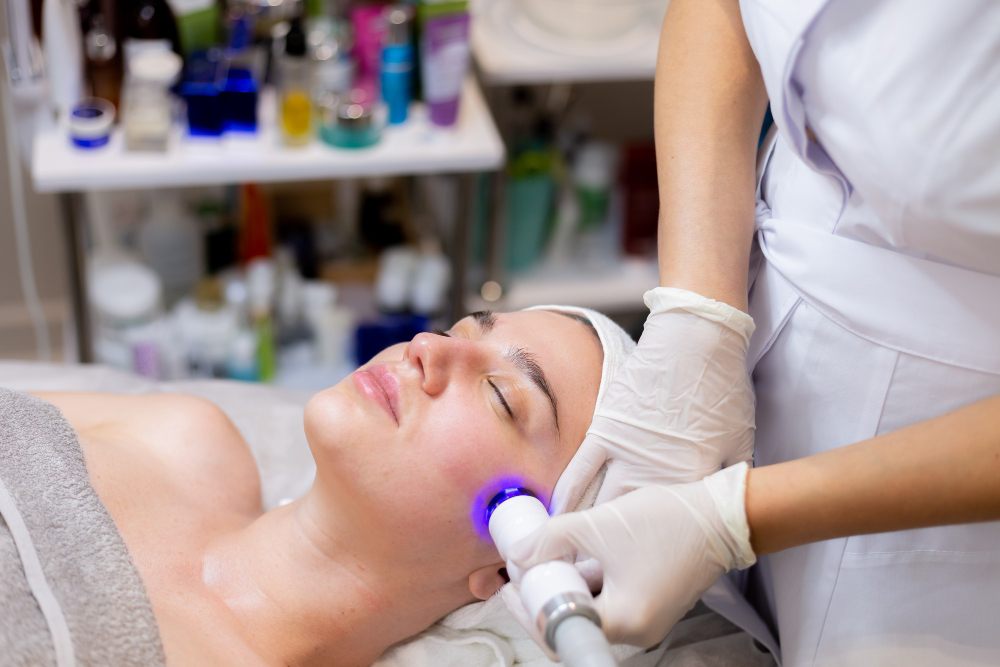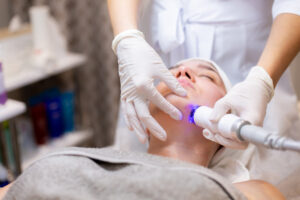
Skin concerns are something most of us deal with at some point. Whether it’s wrinkles, scars, sun damage, or uneven skin tone, these issues can affect how we feel about ourselves. While there are plenty of creams and treatments available, laser skin resurfacing stands out as an option that delivers noticeable results. This article will explore what laser skin resurfacing is, how it works, and why it might be the solution you’re looking for.
What Is Laser Skin Resurfacing?
Laser skin resurfacing is a cosmetic procedure designed to improve the appearance of your skin. Using focused beams of light, this treatment removes damaged layers of skin while stimulating the growth of new, healthier skin. The result? A smoother, more even complexion that looks refreshed.
This procedure can address a variety of skin issues, including:
- Fine lines and wrinkles
- Scars from acne or surgery
- Sun damage, such as age spots
- Uneven skin tone or texture
- Enlarged pores
In short, laser skin resurfacing offers a way to tackle multiple skin concerns at once, making it a popular choice for those looking to enhance their overall appearance.
How Does Laser Skin Resurfacing Work?
The process is pretty straightforward but highly effective. It all starts with a consultation. A trained professional evaluates your skin and determines the best type of laser treatment for your needs. There are two main types of lasers used:
- Ablative Lasers: These are more intense and remove the outer layer of the skin. They’re best for deep wrinkles, scars, and more severe skin damage.
- Non-Ablative Lasers: These work beneath the skin’s surface to promote collagen production without removing any layers of skin. They’re ideal for milder issues like fine lines or slight discoloration.
During the procedure, the laser targets specific areas of concern. The heat from the laser either removes the damaged skin or stimulates your body’s natural healing process, leading to the growth of new cells.
What to Expect During the Procedure
Laser skin resurfacing is typically performed in a clinic or medical spa. Depending on the intensity of the treatment, you might need local anesthesia or even sedation for your comfort. Here’s a general breakdown of what happens:
- Preparation: Your skin is thoroughly cleaned, and protective goggles are provided to shield your eyes from the laser.
- Treatment: The laser device is applied to your skin, targeting specific areas. You might feel a warm sensation or a slight tingling, but it’s usually manageable.
- Aftercare Instructions: Once the procedure is complete, your skin may be red or swollen, much like a mild sunburn. You’ll receive instructions on how to care for your skin as it heals.
Benefits of Laser Skin Resurfacing
One of the biggest reasons we choose laser skin resurfacing is its versatility. It’s not just for one specific problem; it can tackle several issues at once. Here are some of the standout benefits:
- Immediate Results: Many of us notice an improvement in their skin right after the treatment. While it takes time for full results to appear, the initial glow can be a confidence booster.
- Long-Lasting Effects: The results of laser skin resurfacing can last for years, especially if you take good care of your skin afterward.
- Boosts Confidence: When your skin looks better, you feel better. It’s as simple as that.
- Customizable Treatments: The procedure can be tailored to suit your unique needs, whether you have deep wrinkles or just want a fresher complexion.

Is Laser Skin Resurfacing Right for You?
While laser skin resurfacing can deliver incredible results, it’s not for everyone. The ideal candidate has healthy skin and realistic expectations about what the treatment can achieve. It’s also important to consider factors like skin type, as some lasers work better for certain skin tones.
If you have active acne, certain medical conditions, or are pregnant, you may need to explore other options or wait until it’s safe to proceed. A consultation with a professional will help determine if this treatment is a good fit for you.
The Recovery Process
Recovery times vary depending on the type of laser used. Ablative lasers usually require more downtime, as the outer layer of skin has been removed. You might need a week or two for your skin to heal fully. Non-ablative treatments, on the other hand, have minimal recovery time—perfect for those with busy schedules.
Here are some general tips for recovery:
- Moisturize: Keeping your skin hydrated is key to healing.
- Avoid Sun Exposure: Your skin will be more sensitive to sunlight, so make sure to wear sunscreen and avoid direct sun when possible.
- Follow Aftercare Instructions: Your provider will give you specific guidance on how to care for your skin. Stick to these instructions for the best results.
Potential Risks and Side Effects
As with any cosmetic procedure, there are some risks involved. These include redness, swelling, and temporary discomfort. In rare cases, we may experience scarring or changes in skin pigmentation. Choosing a qualified and experienced provider is the best way to minimize these risks.
The Cost of Laser Skin Resurfacing
The cost of laser skin resurfacing can vary widely based on factors like the type of laser, the size of the treatment area, and the clinic’s location. On average, treatments can range from $500 to $5,000. While this may seem like a significant investment, many of us find the long-lasting results well worth the cost.
Final Thoughts: Is Laser Skin Resurfacing Worth It?
If you’re looking for a way to rejuvenate your skin and tackle stubborn concerns, laser skin resurfacing could be a game-changer. It’s a versatile treatment that offers impressive results with relatively little downtime. Whether you want to smooth out wrinkles, fade scars, or achieve a more even complexion, this procedure might be the answer.
Ultimately, the best way to decide if laser skin resurfacing is right for you is to schedule a consultation with a trusted professional. They’ll help you weigh the benefits and risks and create a treatment plan tailored to your goals. With the right care and expectations, you can take a confident step toward healthier, glowing skin.
FAQs About Laser Skin Resurfacing
- How long does it take to see results from laser skin resurfacing?
Results can be noticeable within a week, but full benefits appear after several weeks as the skin heals and regenerates. - Is laser skin resurfacing painful?
Most of us experience mild discomfort during the procedure, often described as a warm or tingling sensation. - How many laser skin resurfacing sessions are needed?
The number of sessions depends on your skin concerns, but many achieve desired results in one to three treatments. - Can all skin types undergo laser skin resurfacing?
While most can benefit, certain lasers are better suited for specific skin tones—consultation with a professional is essential. - What’s the average recovery time for laser skin resurfacing?
Recovery can range from a few days for non-ablative treatments to two weeks for more intense ablative procedures.